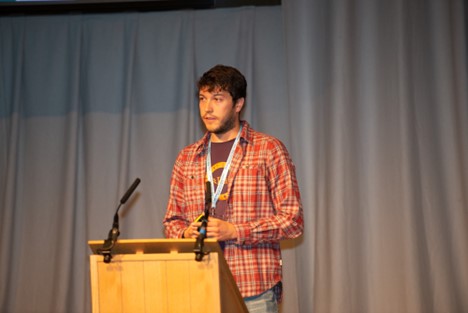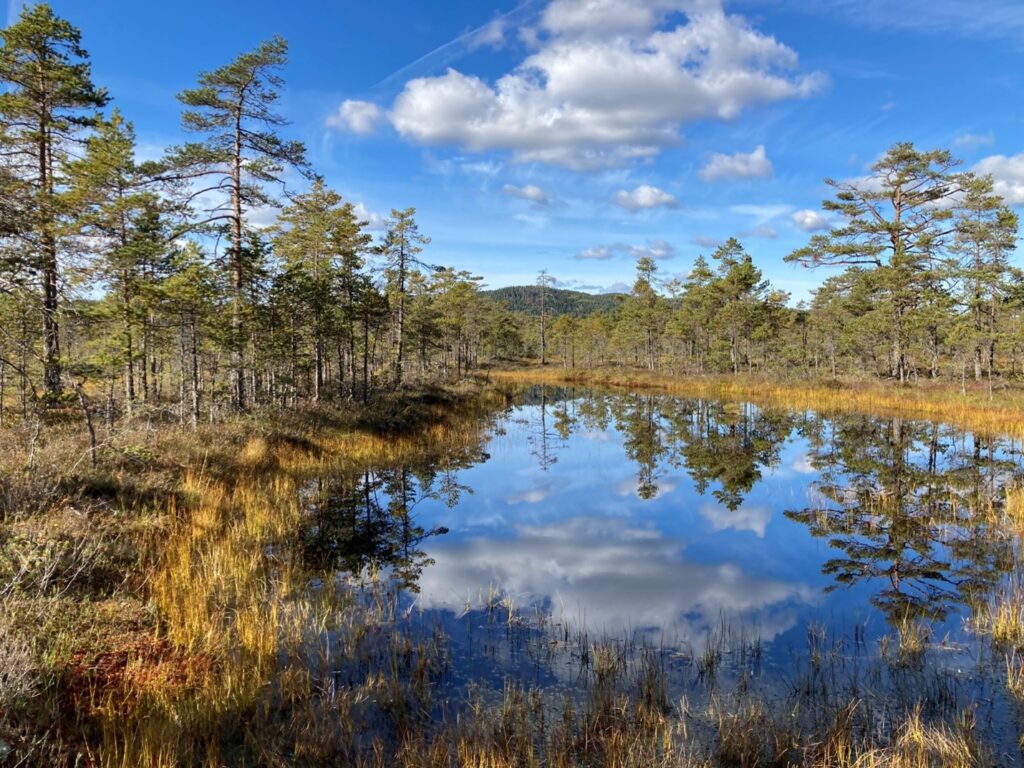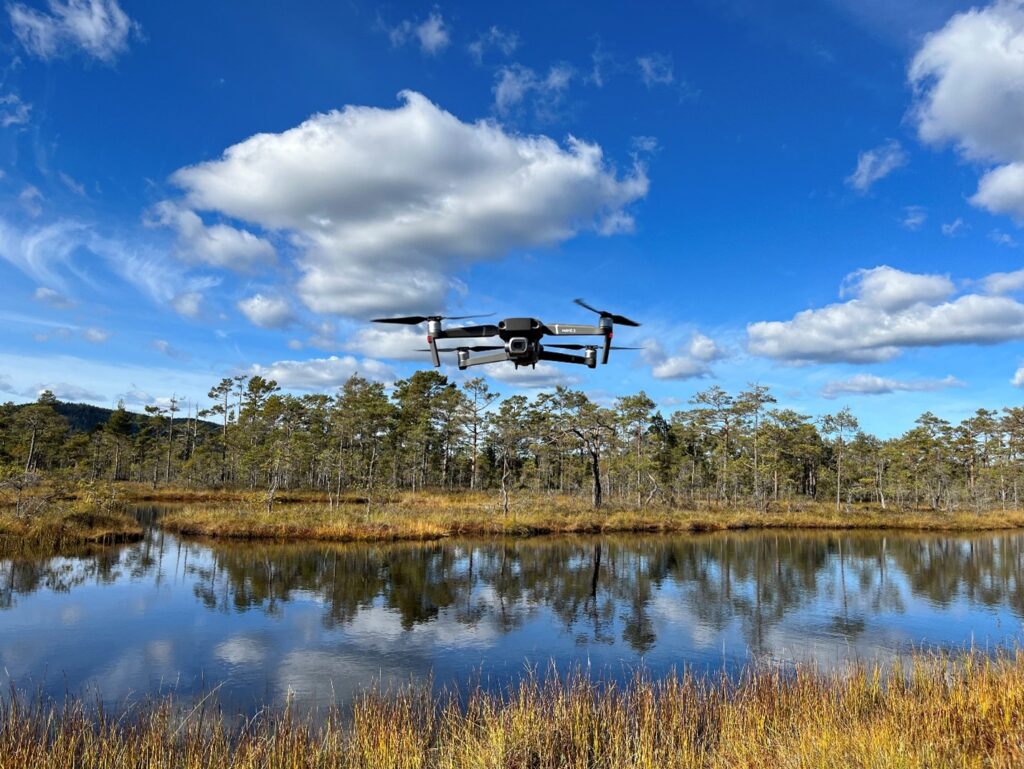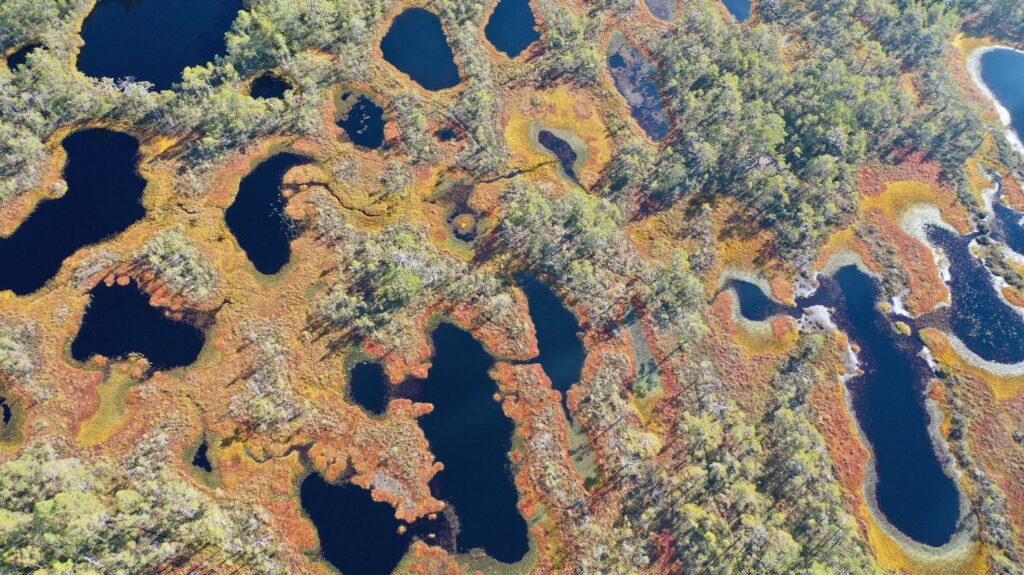Name: Daniel Colson
Institution: River Basins Processes and Management, School of Geography, University of Leeds
PhD Project title: Multi-decadal changes in open-water areas on northern peatlands

What is your background?
I’m a final year PhD student within the School of Geography, studying northern peatland environments. Prior to my current studies, I worked for the Joint Nature Conservation Committee (JNCC) as an Earth Observation Specialist, working with geospatial and remote sensing data across the UK and abroad.
Tell us about your project and the area of environmental science are you most excited about?
Peatlands are a type of wetland ecosystem characterised by an abundance of soil organic matter that accumulates in permanently waterlogged conditions. Worldwide, peatlands cover less than 3% of the land surface, with the largest concentrations in the northern hemisphere, particularly in mid- and high-latitude areas (north of 45 °N) of Canada, Scandinavia, and Western Siberia. Despite their limited global cover, peatlands play an important role in the global carbon cycle. My research focuses on the understanding of these landscapes across scales, from the sub-metre to the tens of kilometres. Using a combination of Uncrewed Aerial Vehicle (UAV), airborne and satellite data, I map and explore peatland environments. The area of environmental science I am most excited about comes from the plethora of open data available and the opportunities this presents to a global audience.

Was having environmental science at the core of your PhD project important to you?
I am fascinated by climate change and its effects on the natural environment, particularly peatland landscapes. Peatlands play a vital role in carbon sequestration and storage, alongside vital ecosystem services. Understanding and supporting these landscapes are integral to future climate work, supporting stakeholders, citizens, and the wider UK transition to net zero.

Why did you decide to enter the environmental sector?
My love for geography, and subsequently the environment, was inspired by passionate teachers throughout my time at school, fostered by their ability to sell rainy trips to the Lake District! I completed an undergraduate degree in Geography and a Masters in Remote Sensing and GIS at Aberystwyth University. Subsequently, I worked for several years as an Earth Observation Specialist, which gave me the chance to see the world from a whole new perspective. I had known for a few years that I wanted to pursue a PhD, but wanted to take a break from academia. I saw a number of projects at Leeds that fascinated myself and, after contacting the supervisory team and PANORAMA, I knew it was somewhere I could fit in and grow.

What does equity, diversity and inclusion in environmental science mean to you?
Equity, diversity and inclusion is incredibly important, particularly in the field of environmental science where this hasn’t always been the case. I have seen a number of improvements across my time in the field, and look forward to the future! It’s important that everyone has equitable access to the same opportunities.
What are your hopes for future PhD students?
I think it’s incredibly important that PhD students are given credit, both financially and reputationally, for the work they conduct and how important they are to having active and social lab and office environments. Without PhD students, there is no future of academia! Myself, and others within the department and wider university, have taken breaks from academia for careers before returning to study for PhDs. The opportunity for more people to gain an idea of what independent research is like is incredibly important, as 4 years is a long commitment for someone.
